Book choices for today:
- On Beyond Bugs: All About Insects Tish Rabe
- About Insects: A Guide for Children Cathryn P. Sill
- Alphabet of Insects Barbie Heit Schwaeber
- Insects are My Life Megan McDonald
- Europe Sandra Newman
- Europe David Petersen
Zoology: (first circle)
Need for lesson – A variety of insect pictures and/or a combination of arachnids and insects for comparison.
Zoology 34
We have found out that there are different groups of invertebrates. Arthropods are animals that have a hard outside covering called an exoskeleton. There are more than a million different types of arthropods. Two large groups of arthropods are arachnids, which we found out are spiders, and insects. We are going to now talk about the group of arthropods called insects. What makes an insect an insect? We have clues to help us know if something is an insect. Insects have six legs. Spiders have eight. If it has six legs it is an insect. Another clue is body parts. We learned that spiders have two body parts. Insects have three. They have a head, thorax, and an abdomen. An insects six legs are attached to the thorax, or middle body part.
Butterflies, bees, beetles, and ants are different kinds of insects. There are many more. Entomology is the study of insects. Scientist that study insects are called entomologist. Would you like to grow up to be an entomologist? These scientist say their are over 30 million species or different kinds of insects in the world! The fastest known insect is the dragonfly. The longest is a kind of walking stick. The heaviest insect is the Goliath beetle from Africa.
In their development from egg to adult, insects change in form. This change is called metamorphosis. Do we remember about metamorphosis? Which vertebrate group of animals goes through metamorphosis? Amphibians. So like amphibians, insects go through a change too, they do not look like the adults when they hatch from the egg.
Let’s look at some pictures of different insects.
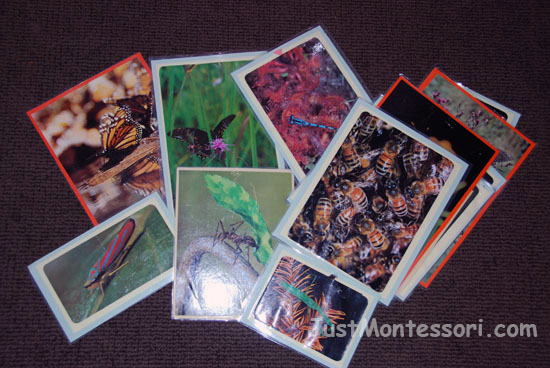
Invertebrates – Insects
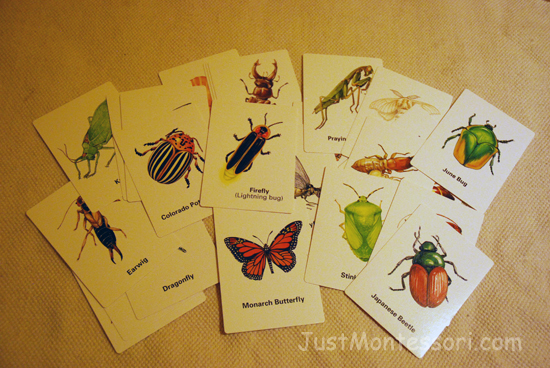
Insect Vocabulary Card Set
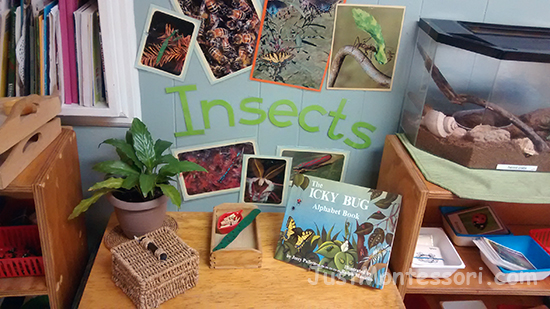
Insect Table
This is where I put the praying mantis case, caterpillars, etc. for children to observe.
Additional Works:
Insect X-ray Pictures – These can be found in many science catalogs for children. Children match the insect picture to its x-ray picture.
Insect Matching Cards – I made these cards with pictures from a book.
Insect Vocabulary Cards – From kidssoup.com.
Insect Floor Puzzle
Bug House
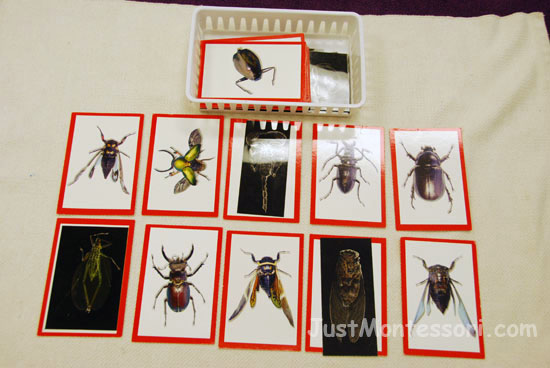
Insect X-Ray Matching
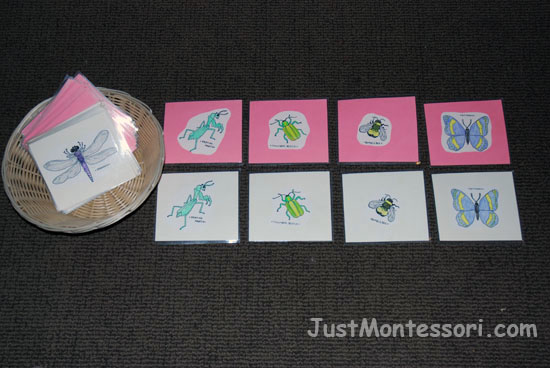
Insect Matching Cards
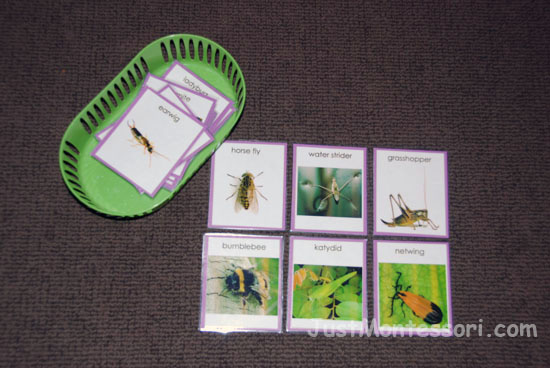
Insect Vocabulary Cards
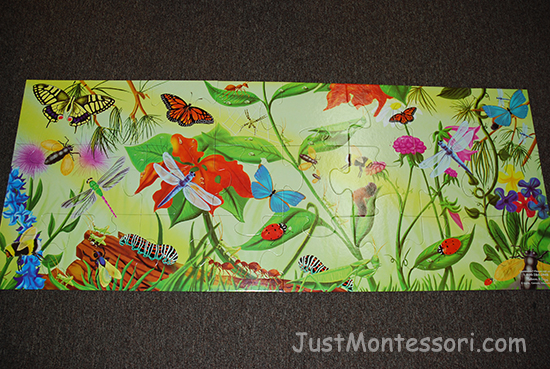
Puzzle

Bug House
Practical Life:
Insect Sorting
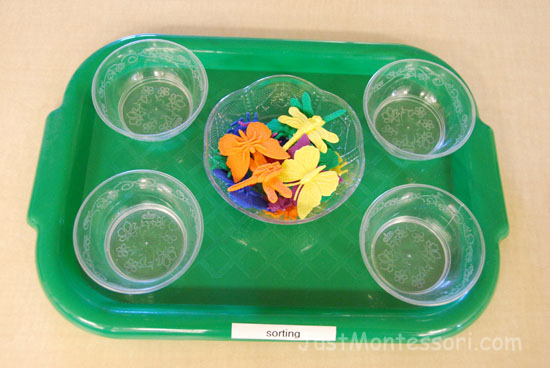
Insect Sorting
Art:
Insect Rubbings – Children use the side of crayons to make a rubbing of insects. I like to use crayon rocks, they seem to fit children’s hands for this kind of work comfortably.
Insect Stamp Prints
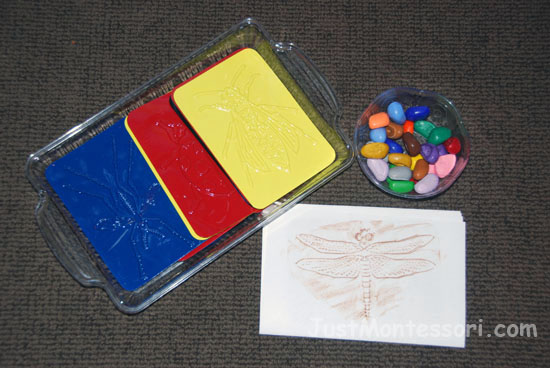
Insect Rubbing
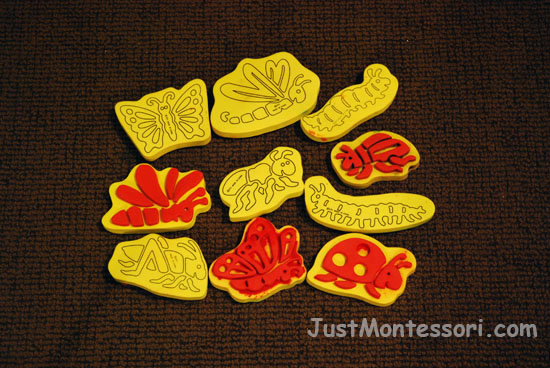
Insect Stamp Prints
Songs/Poems:
Where is the Insect? Pictures of the insects used in the poem. As you say the poem, children who are holding that particular insect hold it up during, “Here I am”. Depending on the children, they themselves can respond to the poem saying lines like, “Very well, I thank you”.
Where is beetle?
Where is beetle?
Here I am, here I am.
How are you today sir?
Very well, I thank you.
Fly away, fly away.
Where is bumblebee?
Where is bumblebee?
Here I am, here I am.
How are you today sir?
Very well, I thank you.
Fly away, fly away.
(continue with whichever insect pictures you have; dragonfly, ladybug, grasshopper, etc.)
Geography: (first circle)
Need for lesson – Montessori map of Europe, a variety of pictures of Europe, and any items that represent Europe for the continent table or tray.
Geography 41
In our passports we can stamp the next continent we will be visiting. This is a map of Europe. On the continent globe it is the red one. It is the second smallest of all the continents. Europe has many countries. Let’s look at some of them. Italy, France, England, Spain, Greece, Germany, and Poland. The largest city in Europe is Paris. Paris is the country of France. Russia is the largest country. Many of the famous artist we have learned about were from Europe.
Europe has many old castles. There are different kinds of castles. Castle builders added many defensive features to make castles difficult to attack. Many castles were built on high ground with clear views of the surrounding land. Moats and high walls also helped to defend a castle. If you get to visit Europe some castles are open for people to go and see the inside.
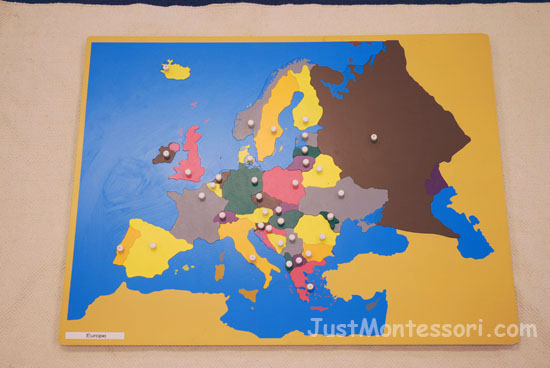
Europe Montessori Map
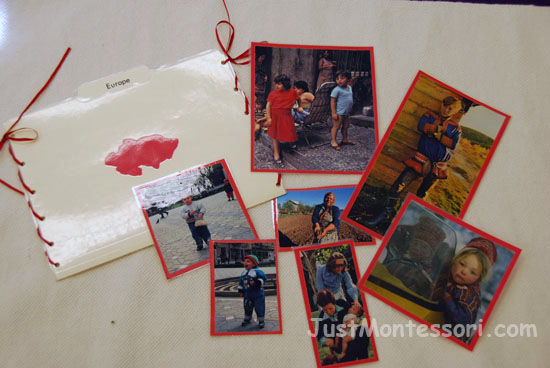
Europe Folder Pictures
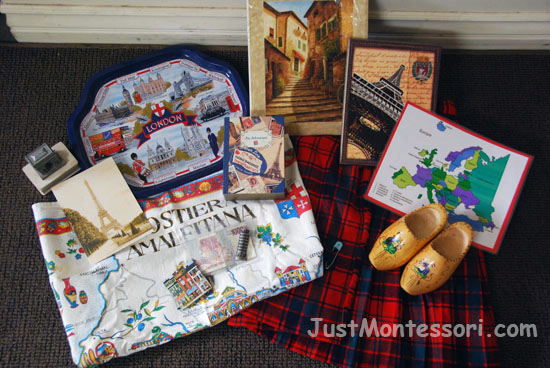
Continent Table – Europe
Song (CD) choices for today:
- Bug Seasonal Songs Macmillan
- Insects Body Dr Jean
-
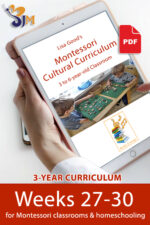 (H) Weeks 27-30$25.00
(H) Weeks 27-30$25.00


